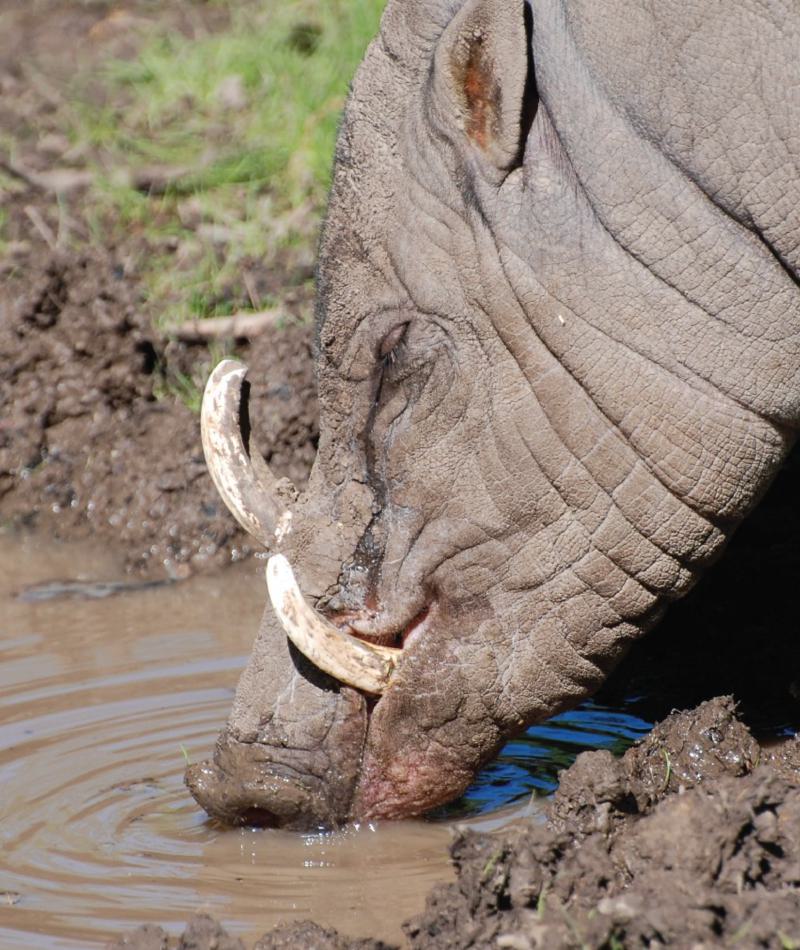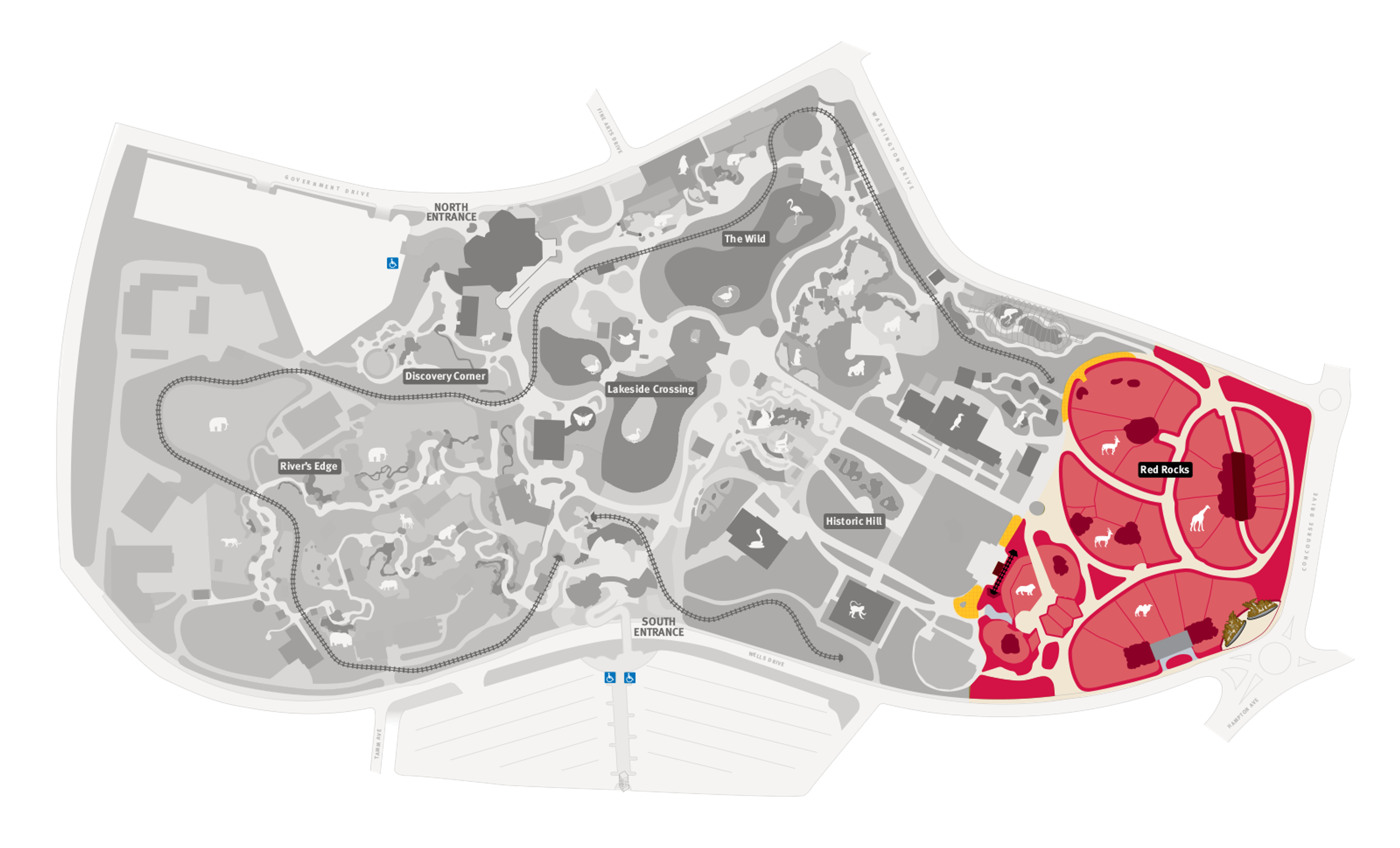
Babirusa
Babyrousa celebensis
Did you know?
- There is still much to learn about wild babirusa due to the difficulty of observing them in their thick jungle
habitat. - This shy pig lives in groups of five to 15 animals.
- The translation of “babi-rusa” is “pig-deer” – a good fit considering its tusks closely resemble antlers.
- Like other pig species, babirusas practice a social system in which males fight with other males over the right to breed with females.
- Females do have tusks, but they are much smaller than those of males.
Tusks
The most striking feature of a babirusa is its face. Besides being armed with a pair of slashing lower tusks, males also have an impressive pair of upper tusks that erupt through the top of the snout and curve back toward the eyes. These upper canines almost resemble antlers rather than teeth.
Unique Pigs
Babirusa are the exception to many "pig rules." Their litter size is generally small; usually only numbering one to two unstriped offspring per litter. They have a more complex two-chambered stomach, more like cows and goats, than other pig species. They also have little to no hair on their drab brown bodies.
Threat Level
- Unknown
- Common
- Near Threatened
- Threatened
- Endangered
- Critically Endangered
- Extinct in the Wild
Threatened
The Babirusa faces a high risk of extinction in the wild.
Range
Indonesian Island of Sulawesi
Habitat
Swamps and forests around rivers and lakes

We care about babirusas
These animals are declining in the wild due to habitat destruction and over-hunting. The Saint Louis Zoo supports Action Indonesia, a conservation program that works to save babirusa, banteng and anoa in their native Indonesian habitats. Learn more about how we are helping wildlife around the world.
Find this animal in Red Rocks

SAINT LOUIS ZOO ZONE
Red Rocks
At Red Rocks, you’ll view some of the world’s most powerful predators living near some of the world’s most graceful prey. Tigers, zebra and giraffes all share the natural rocky boulders and outcroppings as their territory. With shading trees and a bird or two among the mammals, Red Rocks is a great place to spend a day at the Saint Louis Zoo.

